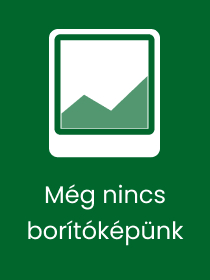
GIS Cartography
A Guide to Effective Map Design, Third Edition
-
10% KEDVEZMÉNY?
- A kedvezmény csak az 'Értesítés a kedvenc témákról' hírlevelünk címzettjeinek rendeléseire érvényes.
- Kiadói listaár GBP 43.99
-
21 016 Ft (20 015 Ft + 5% áfa)
Az ár azért becsült, mert a rendelés pillanatában nem lehet pontosan tudni, hogy a beérkezéskor milyen lesz a forint árfolyama az adott termék eredeti devizájához képest. Ha a forint romlana, kissé többet, ha javulna, kissé kevesebbet kell majd fizetnie.
- Kedvezmény(ek) 10% (cc. 2 102 Ft off)
- Kedvezményes ár 18 914 Ft (18 014 Ft + 5% áfa)
Iratkozzon fel most és részesüljön kedvezőbb árainkból!
Feliratkozom
21 016 Ft

Beszerezhetőség
Becsült beszerzési idő: A Prosperónál jelenleg nincsen raktáron, de a kiadónál igen. Beszerzés kb. 3-5 hét..
A Prosperónál jelenleg nincsen raktáron.
Why don't you give exact delivery time?
A beszerzés időigényét az eddigi tapasztalatokra alapozva adjuk meg. Azért becsült, mert a terméket külföldről hozzuk be, így a kiadó kiszolgálásának pillanatnyi gyorsaságától is függ. A megadottnál gyorsabb és lassabb szállítás is elképzelhető, de mindent megteszünk, hogy Ön a lehető leghamarabb jusson hozzá a termékhez.
A termék adatai:
- Kiadás sorszáma 3, New edition
- Kiadó CRC Press
- Megjelenés dátuma 2023. június 1.
- ISBN 9780367494759
- Kötéstípus Puhakötés
- Terjedelem336 oldal
- Méret 234x156 mm
- Súly 560 g
- Nyelv angol
- Illusztrációk 248 Illustrations, color; 2 Tables, black & white 613
Kategóriák
Rövid leírás:
A textbook for undergraduate and graduate students, this edition is faithful to the original vision that cartography instruction should be software agnostic. All chapters are updated with new illustrations and new sections for datasets that didn?t exist when the 2nd edition was published, as well as techniques and trends in cartography.
TöbbHosszú leírás:
Since the publication of the bestselling second edition 5 years ago, vast and new globally-relevant geographic datasets have become available to cartography practitioners, and with this has come the need for new ways to visualize them in maps as well as new challenges in ethically disseminating the visualizations. With new features and significant updates that address these changes, this edition remains faithful to the original vision that cartography instruction should be software agnostic.
Discussing map design theory and technique rather than map design tools, this book focuses on digital cartography and its best practices. This third edition has completely new sections on how to deal with maps that go viral and the ethics therein; new presentation ideas; new features such as amenities, climate data, and hazards; the new Equal Earth projection; and vector tile design considerations. All chapters are thoroughly updated with new illustrations and new sections for datasets that didn?t exist when the second edition was published, as well as new techniques and trends in cartography.
New in the third edition:
- A true textbook, written with a friendly style and excellent examples explaining everything from layout design to fonts and colors, to specific design considerations for individual feature types, to static and dynamic cartography issues.
- Thoroughly updated with new features such as points of interest, climate data, hazards, and buildings; new projections such as the Equal Earth projection and the Spilhaus projection; and vector tile design considerations such as label placement techniques and tricks for making world-class basemaps.
- Includes over 70 new map examples that display the latest techniques in cartography.
- Reflects on new developments in color palettes; visualization patterns; datums; and non-static output media such as animation, interaction, and large-format cinematic techniques, that weren?t available for the second edition.
- Defines and illustrates new terms that have made their way into the profession over the last few years such as story maps, flow maps, Dorling cartograms, spec sheets, bivariate choropleths, firefly cartography, Tanaka contours, and value-by-alpha.
In this third edition, author Gretchen Peterson takes a "don?t let the technology get in the way" approach to the presentation, focusing on the elements of good design, what makes a good map, and how to get there, rather than specific software tools. She provides a reference that you can thumb through time and again as you create your maps. Copiously illustrated, the third edition explores novel concepts that kick-start your pursuit of map-making excellence. The book doesn?t just teach you how to design and create good maps, it teaches you how to design and create superior maps.
TöbbTartalomjegyzék:
1: Introduction.
2: Creative Inspiration.
3: Layout Design.
4: Fonts.
5: Color.
6: Features.
7: Static Maps.
8: Projections.
9: Zoom-Level Design.
Appendix A: Map Examples.
Appendix B: Color Swatches.
Több










